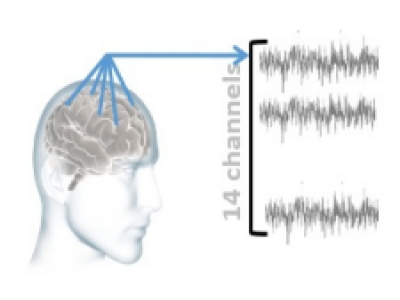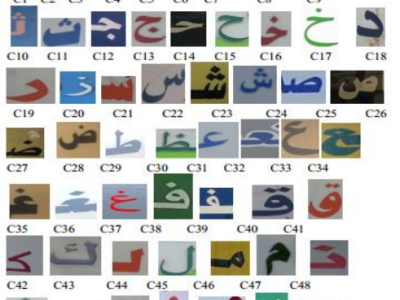DASPS database

- Citation Author(s):
-
Asma Baghdadi (REGIM-Lab.: REsearch Groups in Intelligent Machines, ENIS, University of Sfax, Tunisia)Yassine Aribi (REGIM-Lab.: REsearch Groups in Intelligent Machines, ENIS, University of Sfax, Tunisia)Rahma Fourati (REGIM-Lab.: REsearch Groups in Intelligent Machines, ENIS, University of Sfax, Tunisia)Najla Halouani (REGIM-Lab.: REsearch Groups in Intelligent Machines, ENIS, University of Sfax, Tunisia)Patrick Siarry (Laboratoire Images, Signaux et Systemes Intelligents, University of Paris-Est Creteil.)
- Submitted by:
- Adel Alimi
- Last updated:
- DOI:
- 10.21227/barx-we60
- Data Format:
 10219 views
10219 views
- Categories:
- Keywords:
Abstract
Anxiety affects human capabilities and behavior as much as it affects productivity and quality of life. It can be considered as the main cause of depression and suicide. Anxious states are easily detectable by humans due to their acquired cognition, humans interpret the interlocutor’s tone of speech, gesture, facial expressions and recognize their mental state. There is a need for non-invasive reliable techniques that perform the complex task of anxiety detection. DASPS database contains recorded Electroencephalogram (EEG) signals of 23 participants during anxiety elicitation by means of face-to-face psychological stimuli.
DASPS mean to create a starting point for new researches in the field of anxiety detection.
Neuro headset setup:
The award winning EMOTIV EPOC+ is designed for scalable and contextual human brain research and provides access to professional grade brain data with a quick and easy to use design.
Emotiv Epoc have 14 (+2 references) sensors placed at this locations: AF3, AF4, F3, F4, FC5, FC6, F7, F8, T7, T8, P7, P8, O1, O2 with a sampling rate of 128 SPS (2048 Hz internal) and a resolution of 14 bits 1 LSB = 0.51μV. Emotiv Epoc is a wireless device with 2.4GHz band.
Stimulation Conditions:
The recording is done during the annual workshop of Research Groups in Intelligent Machines Lab. In an isolated place, participants were asked to conduct the experiment individually in the presence of the psychotherapist.
Participants were asked to minimize eyes blinks and body gestures in order to record signals with minimum artifacts as possible.
Experimental Protocol:
The participant is prepared to start the experiment, with closed eyes and minimizing gesture and speech. The psychotherapist starts by reciting the first situation and helps the subject imagining it. This phase is divided into two stages: recitation by the psychotherapist for the first 15 seconds and Recall by the subject for the last 15 seconds.
When time is over, the subject is asked to rate how he felt during stimulation using the Self Assessment Manikin (SAM). It has two rows for rating: Valence and Arousal. This trial is repeated until the sixth situation. At the end of the experiment, some items from HAM-A are re-evaluated by the psychotherapist to adjust the participant’s anxiety level.
Database contents:
The database contains .edf files of the raw EEG data collected from the 23 participants. Raw data and preprocessed data stored on .mat format are also provided in this database.
We provided a matlab script for the segmentation of each EEG signal into 6 segments corresponding to the 6 situations.
Citations:
All documents and papers that uses the Database for Anxious States based on a Psychological Stimulation (DASPS database) will acknowledge the use of the database by including an appropriate citation to the following:
[1]: Asma Baghdadi, Yassine Aribi, Rahma Fourati, Najla Halouani, Patrick Siarry, and Adel M. Alimi. "DASPS: A Database for Anxious States based on a Psychological Stimulation." arXiv preprint arXiv:1901.02942 (2019).
[2]: Asma Baghdadi, Yassine Aribi, Rahma Fourati, Najla Halouani, Patrick Siarry, and Adel Alimi. "Psychological stimulation for anxious states detection based on EEG-related features." Journal of Ambient Intelligence and Humanized Computing (2020): 1-15.
Instructions:
Download Zip file and extract it.















In reply to Where do I find the matlab by Noelia Pantigoso
You can find the MATLAB script for the segmentation in the file "Documents and Code.zip".
In reply to Where do I find the matlab by zhicong Guo
You can find the MATLAB script for the segmentation in the file "Documents and Code.zip".
where can I find the matlab script for the segmentation?
In reply to where can I find the matlab by Aaryaansh Gaind
You can find the MATLAB script for the segmentation in the file "Documents and Code.zip".
Hello. Where i can find the EEG recordings? not the numerical values but the signals?
Hello, thanks for making this dataset available. I have a couple of questions.
Thanks!